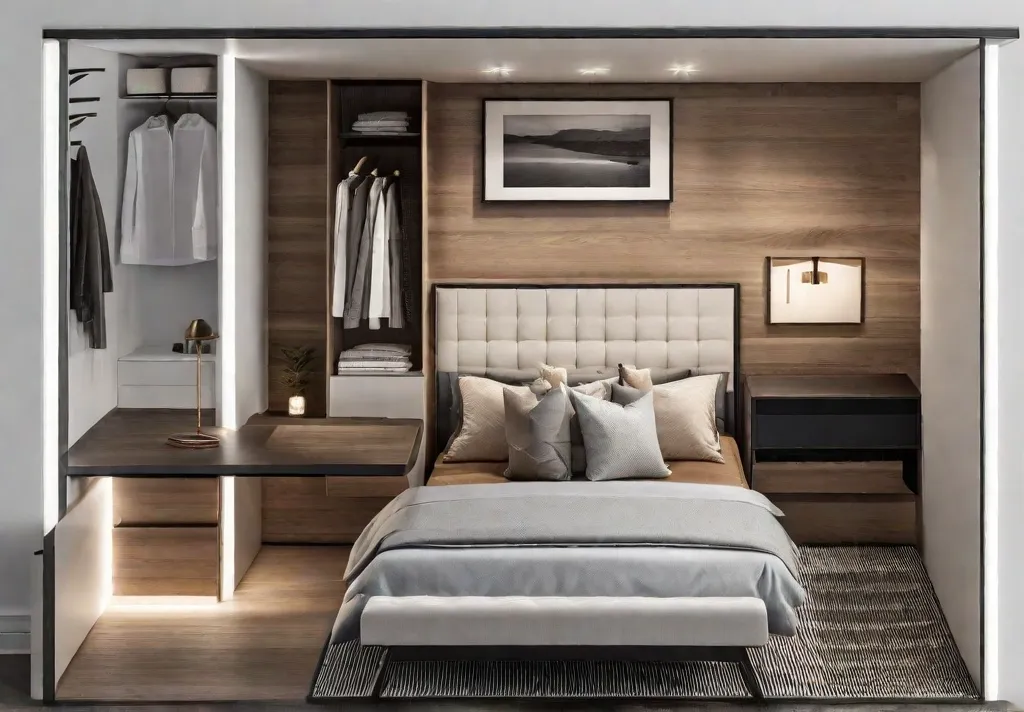Our bedrooms have become sanctuaries of respite and rejuvenation in today’s fast-paced world filled with endless stimuli and distractions. As we seek spaces that soothe our senses and declutter our minds, minimalist design has emerged as an alluring approach to bedroom aesthetics. By thoughtfully incorporating key elements, we can transform these private retreats into havens of simplicity, serenity, and comfort.
A recent survey found that over 65% of respondents feel overwhelmed by clutter at home, while 81% believe their living spaces directly impact their ability to relax. With rest being essential human needs, it’s no wonder the minimalist movement has taken root. As author William Morris put it, “Have nothing in your house that you do not know to be useful or believe to be beautiful.” This mantra lies at the core of minimalist philosophy.
When designed effectively, the minimalist bedroom embodies simplicity and intentionality. Every piece serves a purpose, free from visual noise and distraction. Clean lines, neutral hues, and ample breathing room allow us to disconnect from the chaos of everyday life. Studies show that decluttering our environment leads to clearer thinking, lower stress levels, and improved life satisfaction. We rediscover gratitude for what we genuinely need by paring down our possessions.
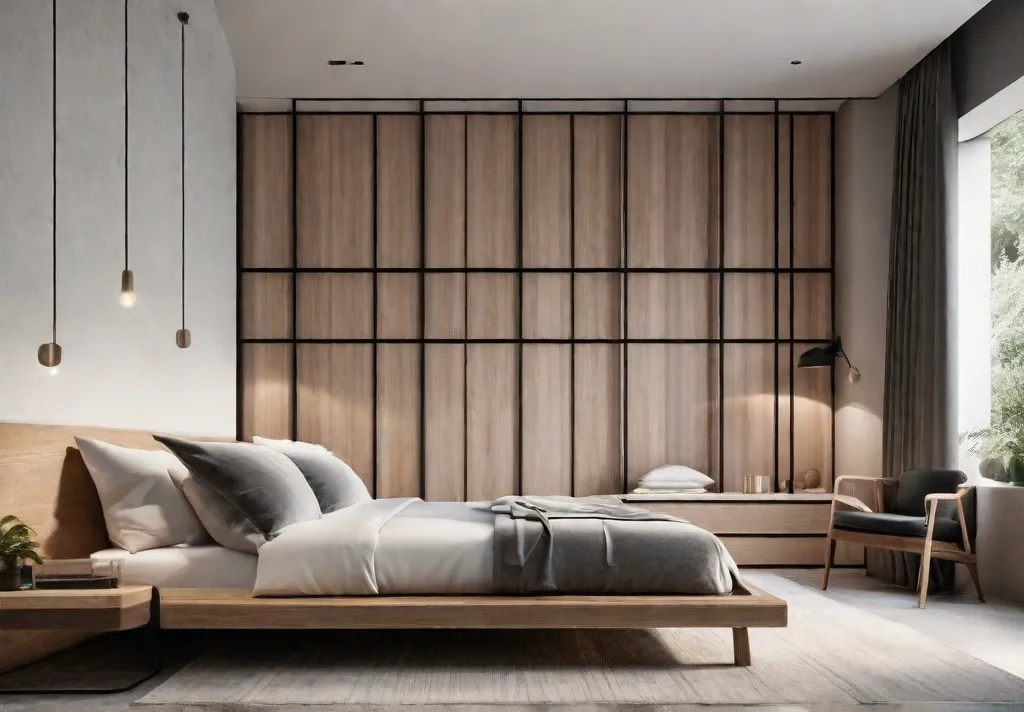
Below, we will explore eight fundamental design elements for creating a minimalist bedroom that soothes the soul. From color palettes to lighting, storage, and personalization, these building blocks work harmoniously to help you simplify and enhance your sanctuary.
Introducing Minimalistic Design Elements
The minimalist bedroom requires a delicate balance between aesthetics and function. The goal is to include only the essentials—those pieces serving practical needs or sparking joy and inspiration. We transform the space into a personal haven by intentionally incorporating items that relax, restore, and re-energize.
The following eight elements form the foundation for designing a bedroom that simplifies life and soothes the spirit:
Color Palette: Embracing Serenity
Color profoundly impacts mood and emotions, making it a powerful design tool. To cultivate serenity, a neutral color palette creates a blank canvas primed for relaxation.
Neutral and Earth Tones
Soft hues like white, beige, and light gray have an inherently calming effect, providing the perfect backdrop for punctuation pops of color. Their versatility also allows for effortless seasonal changes through textiles and accents.
The Role of Accent Colors
Accent colors introduce depth without overwhelming. For example, sage green bedding connects us to nature, while vibrant throw pillows add a cheerful touch. Keep accents low in saturation and strategically placed.

The Psychological Impact
Color psychology says soft blues and greens lower heart rate and blood pressure, promoting restful sleep. Warm shades like terracotta can boost comfort and creativity.
Actionable Tips
- Walls: Stick to light neutrals like cloud white or whisper gray.
- Bedding: Choose natural linen in white, oatmeal, or pale gray.
- Accessories: Add accent colors through art, pillows, and decorative objects.
Minimal Furniture: Only the Essentials
Furniture selection plays a pivotal role in any minimalist space. Each piece must contribute to aesthetics and function while avoiding clutter and disorder.
Choosing Functional Pieces
The mantra “form follows function” guides all furniture choices. Before buying, consider what purpose the item will specifically serve. Does it fill a practical need or enhance relaxation through comfort and beauty? If not, refrain from purchasing.
Space and Proportion
Arranging furniture with balance and breathing room prevents a cramped feeling. Allow enough space to navigate from one area to the next comfortably. Focal points also introduce order, such as placing the bed on the central wall.

The Bed as a Focal Point
The bed naturally commands attention since we spend nearly a third of our lives asleep. Select a frame with clean lines in a muted finish. Then add a comfortable mattress—your body will thank you.
Actionable Tips
- Evaluate current furniture, removing unused pieces
- Invest in multifunctional items like storage ottomans or bedside shelves
- Float the bed frame to create airiness and highlight the flooring
Decluttering: Unburden Your Space
Clutter collects unconsciously, burdening our spaces with unnecessary weight. Decluttering liberates us from this visual noise pollution, creating calmer surroundings.
The Philosophy Behind Decluttering
Decluttering allows us to clear both physical and mental space. Keeping only items that add value makes our thoughts less distracted, improving concentration.

Step-By-Step Guide
Envision your ideal space, sparse and airy.
Sort through belongings, discarding unused items.
Organize remaining objects for accessibility and aesthetics.
Maintain a clutter-free space with consistent tidying.
Storage Solutions
- Baskets neatly store items while adding natural texture.
- Floating shelves display cherished objects.
- Hooks on walls corral coats, bags, and hats.
Actionable Tips
- Institute a regular decluttering session, daily or weekly.
- Store off-season items elsewhere, only keeping essentials handy.
- Before buying anything new, discard or donate something old.
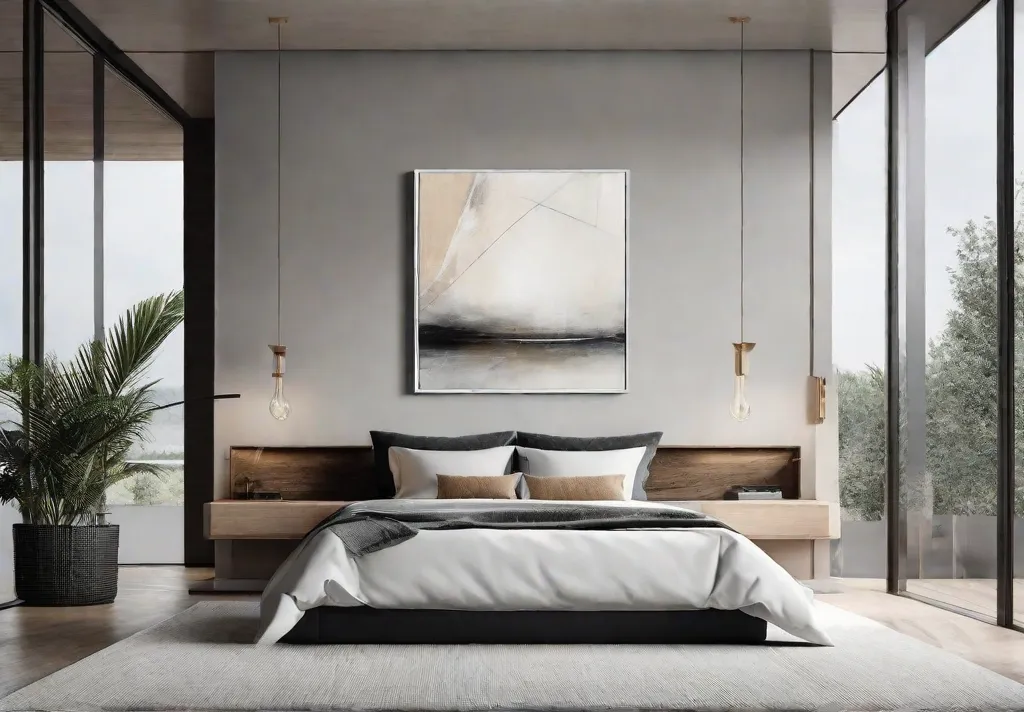
Lighting: Natural and Artificial Harmony
Proper lighting sets the overall tone within a minimalist bedroom. The goal is to maximize natural light while strategically incorporating artificial sources to create a soothing glow during all times of the day.
Natural Light
Abundant natural light keeps the mood bright and cheerful. Position windows to capture daylight, using sheers to filter intensity as needed. Mirror placement also bounces sunlight more profoundly into a room.
Artificial Lighting
Where natural light is lacking, supplemental lighting steps in:
- Ambient lighting radiates a soft overall glow.
- Task lighting spotlights specific areas like a reading nook.
- Accent lighting casts intriguing shadows or highlights the artwork.
The Mood-Setting Magic of Lighting
Lighting has the power to set our emotional state. Bright white light energizes, while warmer 2700K bulbs set a relaxing tone. Dimmers allow customized scene settings. Use lighting to create your desired atmosphere.
Actionable Tips
- Incorporate lighting on multiple levels for flexibility.
- Install dimmers on all light fixtures.
- Position lights to avoid glare and shadows.

Textiles: Textural Warmth
Textiles breathe life into a minimalist bedroom through touches of comfort and texture. Natural fibers like cotton and linen offer supreme breathability for better sleep.
Selecting Quality Over Quantity
When choosing textiles, quality resoundingly beats quantity. Invest in a few durable, natural-fiber pieces that become beloved over time. With proper care, higher-quality textiles last for years, avoiding waste.
Texture and Comfort
Add layers of texture with cozy throws, plush rugs, and soft pillows to create a welcoming nest. Double up on pillows against the headboard for comfortable reading support.
Keeping It Neutral
Stick to solid neutrals and natural textures to complement the peaceful atmosphere. Off-whites, creams, and gray-toned textiles align with minimalist principles. Weave in hints of color through accent pillows or a throw blanket draped on a chair.
Actionable Tips
- Seek out high-quality, ethically made textiles from sustainable materials.
- Wash bed linens weekly to safeguard health and hygiene.
- Store seasonal textiles properly to prevent damage from moths or mildew.
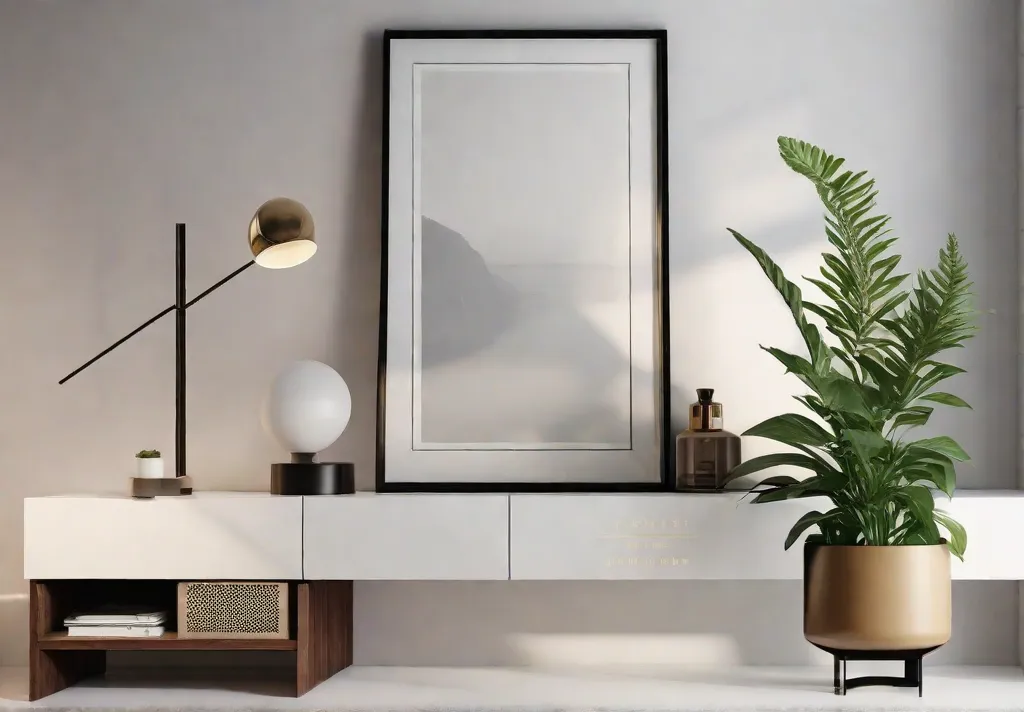
Art and Decor: Cherished Accents
Art and decor play a unique role in the minimalist bedroom by infusing personality into the tranquil atmosphere. Each piece must contribute to the overall aesthetic or hold deeper personal meaning.
The Minimalist Approach to Decoration
When curating accent pieces, quality and significance outweigh quantity; select items that bring you joy, promote relaxation, or highlight some aspect of your identity.
Focal Points
Strategically placed focal points draw the eye to something special. For example, a vibrant tapestry above the bed creates visual interest, while layers of personal photographs on the dresser share memories.
The Power of Negative Space
Equally as crucial as displayed objects is the breathing room around them. Negative space allows accents to claim the spotlight instead of competing visually.
Actionable Tips
- Seek decor that aligns with minimalist principles of simplicity, function, and natural materials.
- Spotlight mementos and heirlooms by placing them in wall niches or on floating shelves.
- Rotate seasonal items to keep the space fresh.
- Frame cherished travel photographs or children’s artwork to add warmth.

Flooring: Foundational Simplicity
As the foundation that grounds the entire bedroom, flooring choices significantly impact the minimalist aesthetic. Clean lines and muted tones allow other elements to shine.
Choosing the Right Material
- Hardwood offers timeless, durable beauty that pairs nicely with area rugs for warmth.
- Tile creates a seamless, neutral backdrop that is easy to clean. Use cushy rugs for softness.
- Natural fiber carpeting can provide plush comfort underfoot but requires frequent vacuuming.
Color and Texture
Select solid-toned, subtle-patterned flooring to complement the peaceful atmosphere without bold grains or speckling. Light colors like bleached oak or natural linen tile aid the airy, spacious feeling.
Maintenance and Longevity
All flooring requires routine care and cleaning. Sweep, vacuum, and mop hard surfaces regularly using approved cleaners. Professionally clean carpeting every year or two to protect quality and appearance.
Actionable Tips
- Area rugs define spaces within the bedroom while adding visual interest.
- Use rug pads both to protect floors and prevent slips or wrinkles.
- Steam clean area rugs once or twice a year – fresh rugs revive the whole space!
Personalization: Signature Style
A common misconception is that minimalist rooms appear devoid of personality or individual flair. However, small gestures infuse personalized style while retaining simplicity.
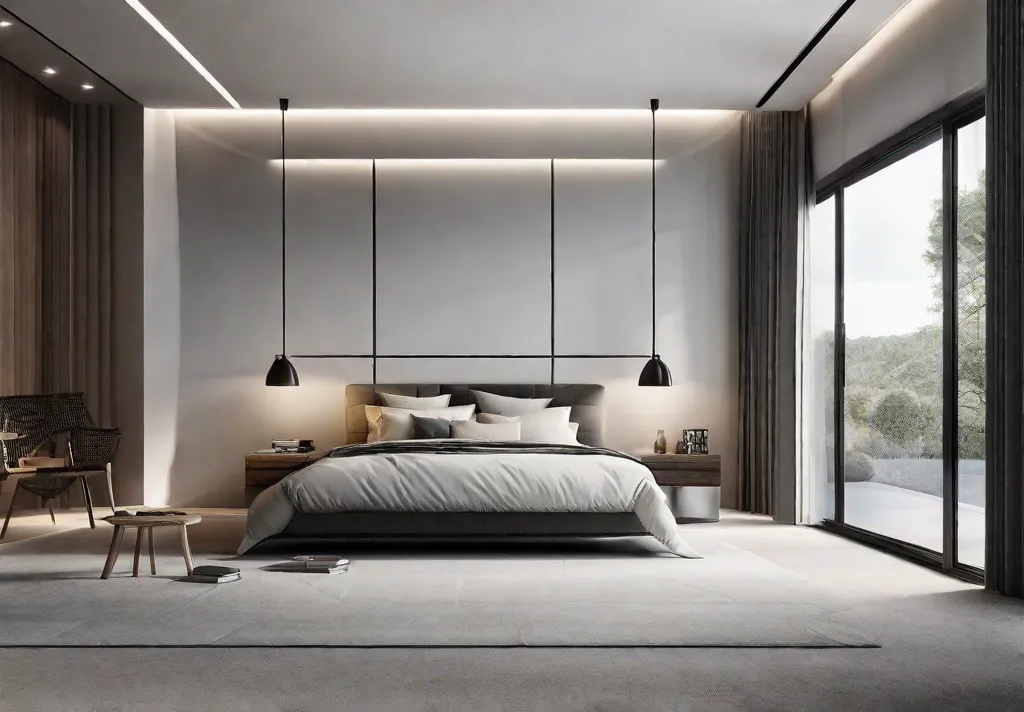
Incorporating Personal Touches
Display a couple of your favorite art prints leaning against a wall or prop cherished hardcover books on a shelf. Float a wall-mounted shadowbox filled with collected ephemera or string up a garland of travel photos.
Balancing Personal Items
The key is keeping embellishments in check so they enhance rather than overwhelm the space. Rotate beloved items to maintain the style fresh and avoid clutter accumulation.
The Importance of Flexibility
Creating a design that is too rigid leaves no room for the flux of life. Allow flexibility for changes and new chapters that emerge. Minimalism finds the balance between blankness and creative expression.
Actionable Tips
- Seek personal items multitasking as decor: a colorful quilt folded at the end of the bed, favorite ceramic pieces holding jewelry, or office supplies on the dresser.
- Keep extra personal items out of sight but accessible through clever hidden storage solutions.
- Change what is displayed seasonally – a vase of spring blooms, twinkling winter lights, and autumn garland.
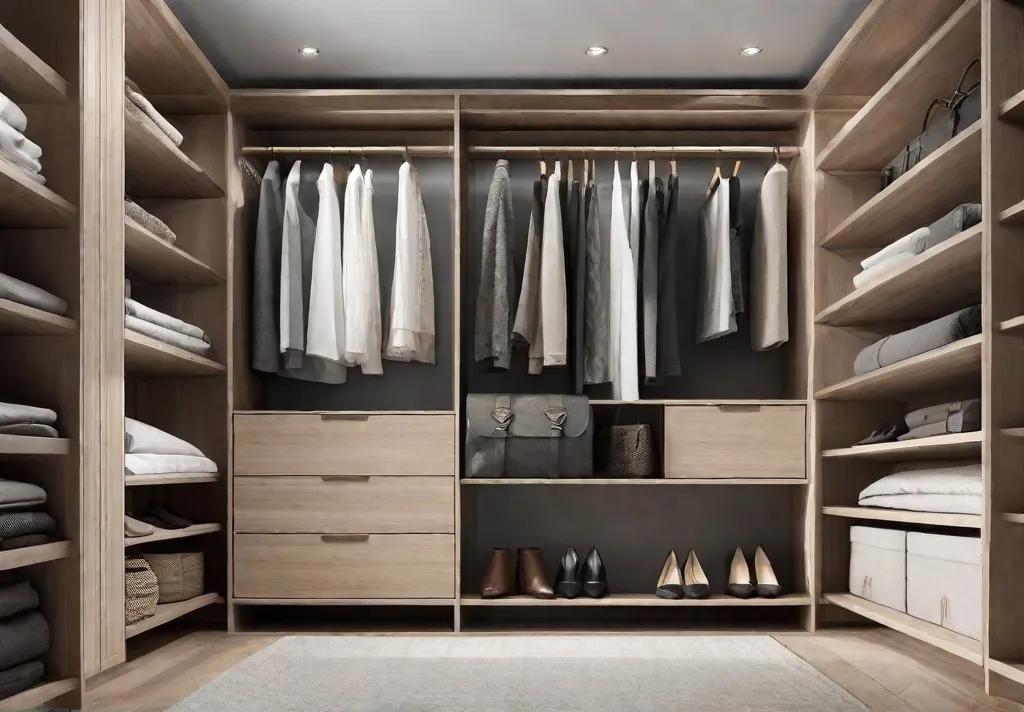
Conclusion: A Bedroom Sanctuary Awaits
The quest for better rest in the comfort of our bedroom retreats inspired us to explore eight fundamental elements for creating a minimalist sleep sanctuary that soothes and recharges.
From calming color schemes to clutter clearing, strategic lighting, and personal touches, we learned how thoughtfully incorporating these key ingredients helps strip away visual noise. The resulting space offers sanctuary from chaotic everyday life.
As you journey to simplify your oasis using the minimalist principles discussed here, remember that this is an evolving process unique to you and your needs.
Allow flexibility for adjustments as life shifts. Most importantly, surround yourself only with items and aesthetics that speak to your spirit, support your values, or serve your relaxation. By creating a bedroom environment that nurtures both body and mind, you have taken an important step to improve quality of life one peaceful night’s sleep at a time.
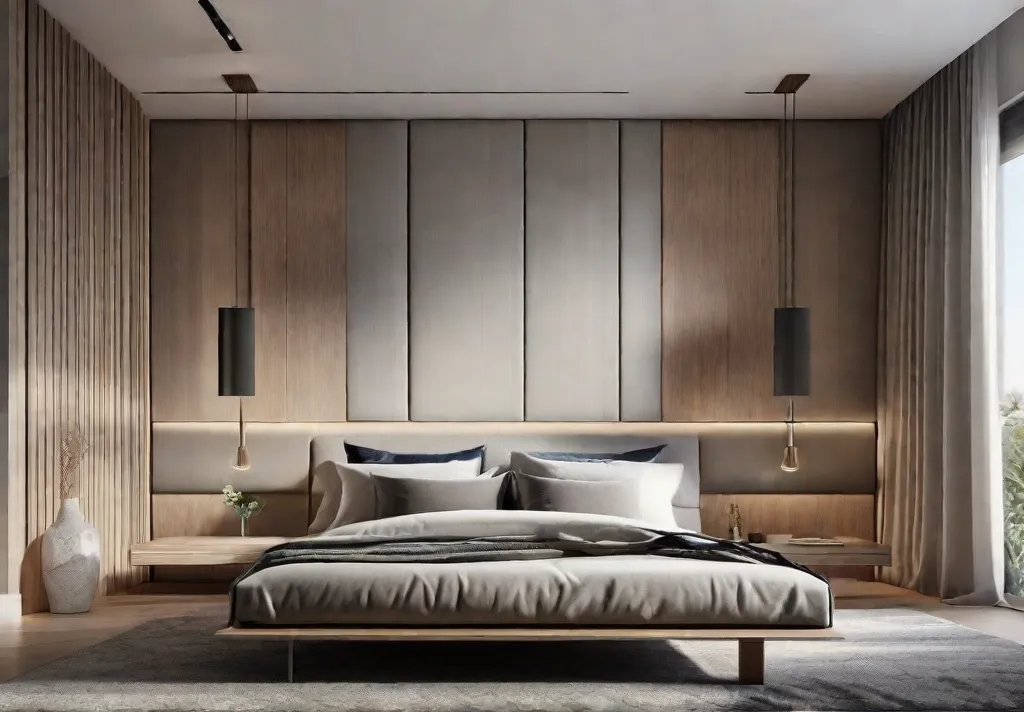
Frequently Asked Questions
Q: How can I add storage in my minimalist bedroom without creating visual clutter?
A: Clever concealed storage is critical. Use under-bed drawers, closet organizing systems, built-in cubbies, and wall-mounted cabinets to tuck items out of sight neatly.
Q: Should I have artwork and photographs in my minimalist bedroom?
A: Thoughtfully curated art and family photos add personality without clutter. Seek out frames with clean lines and neutral matting to complement the aesthetic. Then, arrange in cohesive groupings.
Q: What type of flooring works best for the minimalist style?
A: Light-toned hardwood or tile with smooth textures make excellent foundational backdrops upon which to layer rugs and textiles for softness and visual interest. Durable, easy-to-clean surfaces support simplicity.
Q: How often should I declutter my minimalist bedroom?
A: Plan to declutter your entire bedroom once or twice yearly. Then, maintain simplicity by quickly tidying each evening and removing anything unused or unneeded every week. Regular purging prevents clutter accumulation over time.
